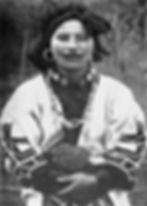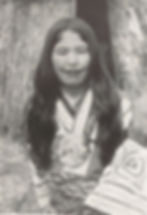Threads of Tradition: The Ainu History and the Art of Tattooing
- Laksmi Wijayanti
- Nov 15, 2024
- 3 min read
Updated: Nov 22, 2024
When I moved to Japan about 8 years ago to start graduate school in Tokyo, I was acutely aware of the general attitude towards tattoos in Japan.
As someone who sees tattoos as an expression of oneself and a form of art, I was initially worried about having to cover my own tattoos while living and traveling in Japan.
Just to make sure I understand the basics of tattoo “etiquette” prior to moving, I learned that in general, I may not be able to enter the highly coveted Japanese hot springs and public baths, roam freely on beaches in Japan, or swimming pools.
Long story short, tattoos, or irezumi, in Japanese, used to be a mark of a criminal in ancient Japan or an association with a crime syndicate, known as the yakuza. Hence, having your body covered in tattoos tends to invite a bad impression.

Therefore, it was a surprise for me when I stumbled across a photograph of a woman with a facial tattoo around her mouth when I was traveling around in northern Japan. I was even more surprised to learn that there is an ethnic minority group in Japan where tattoos are not only practiced but are deeply ingrained in their culture.
This is how I came to first learn about the Ainu.
The Ainu: Japan’s First Settlers
The word ainu, meaning “human,” is not a Japanese word but an Ainu word. It is a separate language on its own and one of the very few indigenous languages remaining spoken in modern Japan.
The Ainu are believed to be the direct descendants of the Jomon people, who used to populate northern Japan back in 14,000–300 BCE before the people from the Honshu region started migrating there. These Honshu immigrants are believed to be the ancestors of the majority of Japanese now. The Ainu called these settlers wajin, which means “colonizers,” or “people who cannot be trusted.”

More and more migration caused an increasing number of conflicts between the Ainu and the wajin, and the former eventually were displaced from their native homes, further into the barren area of the mountain. This then also affected the Ainu’s livelihood, as they were not able to make as good a living as before.
Additionally, with feudal lords from Honshu eventually taking over, the Ainu were then forced to adopt Japanese names and cultures, banned from practicing their religion and rituals, and even banned from speaking their native languages.
Sinuye: Unveiling the Ainu Tattoo Traditions
One such ritual that was forbidden is the tattoo ritual. This practice used to be called anchi-piri, but in the modern Ainu language, it is referred to as nuye, meaning “to carve” or “to write." Therefore, sinuye refers to the tradition of imprinting tattoos on oneself, and it is exclusively found in Ainu women.
The tattoo patterns typically symbolize protection against evil, such as illnesses, infertility, or miscarriages, and these are often found on a woman’s body, including their arms or forehead. However, the commonly generated images I tend to find are old photos of Ainu women with a large smiling tattoo around their mouth, which apparently signified a young girl’s mark of adulthood, indicating their readiness for marriage.

Perhaps this tradition is of particular interest to me, as I found similarities between the significance of tattoos for women, between the Ainu and the women from my own country. However, unlike the Ainu, where the tattoo is a mark of readiness for marriage, in West Malaka of the Indonesian half of Timor island, the tattoo is an indicator that a woman is already married.
Now I can only imagine the distress caused by the Japanese government's ban on this practice back then, as this was viewed as a barrier for the unmarked women to get married.
In modern Japan, the stigma attached to tattoos still prevails, although it has been changing ever so slowly. Still, I try to check whether the places I am traveling to in the country have a tattoo ban or not.

With the Ainu, this tradition is no longer widely practiced, and the last tattooed Ainu woman passed away back in 1998. However, Ainu women are finding ways to reconnect to their ancestors regardless, either with a face paint or makeup.
While the practice of sinuye has disappeared, it does not mean that one cannot learn about this.
If you are interested in learning more about this, contact us to plan your customized, tailored tour with Untold Japan and explore the rich heritage of the Ainu with us.









